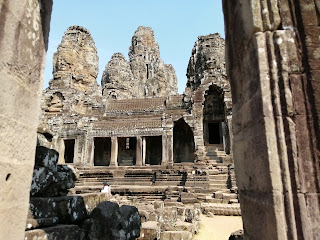As I’ve
written here before, I get most of my reading material via Bookbub and so it is
quite arbitrary stuff. Also, I almost always read on my Kindle and that can
influence what I read because of the ridiculously high prices imposed on eBooks
by the big five publishers. That said here’s the best of my best from books
read last year.
I rarely
read a book twice, but last year I did just that. I had forgotten
entirely that I had read Tony Parson’s Man
and Boy some years before as a paper book and hence bought it cheaply as an
eBook. Some pages in I realised my mistake, but was so entranced by the sad
story and the recollection of how much I had enjoyed it that I ploughed on. It
is a fictional account of a marriage break up involving a very young son and
the tussles between his mum and dad for custody. In the end the father steps
back for the sake of his son and finds a solution that works even though his
lawyer assures him that he could have won custody. An interesting and moving
tale – very well written.
In the biography department, I read Frank Gardner’s Blood and Sand. His life, first as a
banker then as BBC reporter, nearly ended as he was repeatedly and cruelly shot
at close range in the city of Riyadh, Saudi Arabia. Almost miraculously he survived and, though
disabled, returned to journalism. It is a harrowing story, but leavened by his
early successes in life and his courageous recovery. Altogether a riveting read.
That’s a couple of mainstreamers, now for some odd
balls. Metropole by Ferenc Krinthy is a strange novel where this
middle-aged linguist takes a plane to a conference somewhere in Scandinavia.
But he lands in a strange city where the people speak a language that has no
relationship to any that he knows. He is rushed to a hotel and given some money
and a room. He cannot read any of the signs or communicate with anyone – and so
the tale gets stranger and stranger. There seems to be no escape from this
packed citadel where everyone is in a rush and all transport is overloaded. It
is a weird scene, yet portrayed believably through the eyes of the confused yet
rational Budai, the main character.
Then there’s another glimpse into a strange world, this one
real. In To the Moon and Back, I gained
some idea of what it might be like to be a Moonie. Lisa Kohn spent her childhood
as a member of the Unification Church, that strange movement founded by South
Korean Sun Myung Moon. In describing her life, including the long period when
her mother left her to serve the church, I began to understand the silken
chains that tie people to such communities, how they can be so happy within it
and how difficult it is to leave.
Back to fiction, glorious fiction, with The Night Circus by Erin Morgenstern. I love magic and this book is
magical, really magical. The night circus is exactly what its name suggests and
more. Many of the acts and displays are beyond physics, beyond trickery, and even
the transport of the vast tented circus is magical: it appears overnight very suddenly, without sound or fuss. Within this strangely entertaining book there is an even
stranger love story and a plethora of odd, but interesting characters.
As an Oxford guide I often mention the Rhodes Scholarship
and its founder, Cecil. So, I thought I ought to delve into his life a little
more by reading Rhodes: The Race for
Africa by Antony Thomas. It’s an interesting and sometimes shocking
biography of a driven man who seemed to exert power over so many during his
short, but influential, life. It certainly adds fuel to the campaign by students
who demand the removal of the man’s statue from the fascia of his Oxford
College – Oriel – though I still do not think that is the correct course of
action. One disappointment in life for Rhodes (and for me) is that he concluded
that there was no-one whom he could not buy. I think that’s a double negative,
but you know what I mean.
Finishing this much curtailed list with another fictional
book, I did enjoy A Ladder to the Sky
by John Boyne. This is an intriguing tale of an amoral young man who has two
ambitions: to be a famous writer and a father. In pursuing the former he has a
major weakness, though he writes well he is unable to create a great story line
– so he steals them from the people who love him. He is a very attractive man,
sexually ambivalent, and entirely without conscience; so it is shocking, but
perhaps inevitable, that his thefts lead to the deaths of many who become
trapped in his web. I think I’ve written enough already about this book since anything
more would spoil a gripping tale which is very well written and capable of
making the unthinkable tenable. John Boyne certainly does not have his main
character’s weakness.
Oh, but just a mention of the rather zany What’s Eating Gilbert Grape by Peter Hedges. How could I forget Gilbert’s
gargantuan mother?
And so, on to 2020 which has a nice ring to it: provided
each of the four ‘t’s are clearly enunciated. This coming year will undoubtedly
provide me with another feast of fiction, and it looks like I’m going to
need it whilst sequestered in my country retreat for who knows how long.



